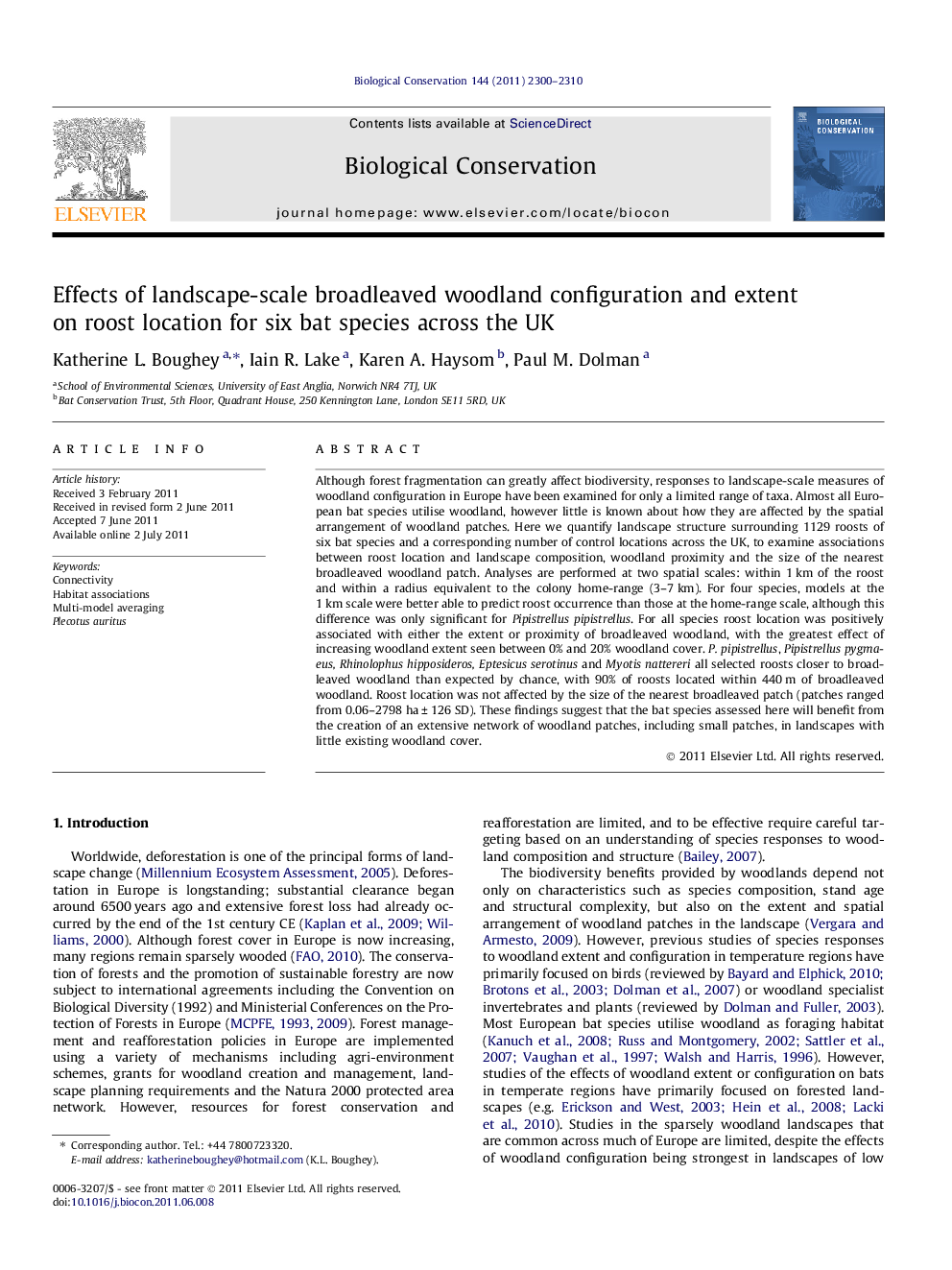| کد مقاله | کد نشریه | سال انتشار | مقاله انگلیسی | نسخه تمام متن |
|---|---|---|---|---|
| 4385551 | 1304541 | 2011 | 11 صفحه PDF | دانلود رایگان |

Although forest fragmentation can greatly affect biodiversity, responses to landscape-scale measures of woodland configuration in Europe have been examined for only a limited range of taxa. Almost all European bat species utilise woodland, however little is known about how they are affected by the spatial arrangement of woodland patches. Here we quantify landscape structure surrounding 1129 roosts of six bat species and a corresponding number of control locations across the UK, to examine associations between roost location and landscape composition, woodland proximity and the size of the nearest broadleaved woodland patch. Analyses are performed at two spatial scales: within 1 km of the roost and within a radius equivalent to the colony home-range (3–7 km). For four species, models at the 1 km scale were better able to predict roost occurrence than those at the home-range scale, although this difference was only significant for Pipistrellus pipistrellus. For all species roost location was positively associated with either the extent or proximity of broadleaved woodland, with the greatest effect of increasing woodland extent seen between 0% and 20% woodland cover. P. pipistrellus, Pipistrellus pygmaeus, Rhinolophus hipposideros, Eptesicus serotinus and Myotis nattereri all selected roosts closer to broadleaved woodland than expected by chance, with 90% of roosts located within 440 m of broadleaved woodland. Roost location was not affected by the size of the nearest broadleaved patch (patches ranged from 0.06–2798 ha ± 126 SD). These findings suggest that the bat species assessed here will benefit from the creation of an extensive network of woodland patches, including small patches, in landscapes with little existing woodland cover.
► We examine associations between bat roost location and landscape structure.
► We model six species using data from 1129 roosts distributed across the UK.
► All species positively associated with either broadleaved woodland extent or proximity.
► Increasing broadleaved extent has largest effect on roost location between 0% and 20% cover.
► Roost location for all species unaffected by the size of nearest broadleaved patch.
Journal: Biological Conservation - Volume 144, Issue 9, September 2011, Pages 2300–2310